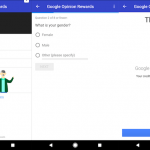
A Broken Internet
Imagine a world where the digital rules and characteristics of the internet are manifested viscerally into our daily lives. In such a world, our activities would be catalogued and housed in storage facilities owned by corporations, and the simple act of entering into a storefront would oblige us to surrender our most sensitive personal information. Surely, people would not tolerate living under those circumstances. However, that’s exactly the model used across the world everyday by people interfacing with the internet. Is this simply the cost of connectivity or is the internet broken?
Muneeb Ali, Blockstack co-founder and PhD candidate at Princeton University in New Jersey, elaborated about this paradigm for ETHNews:
“The internet evolved in a way that we have started trusting remote cloud providers and remote servers blindly for everything. Users basically give up all of their data, it’s not [theirs] and it is stored within Facebook or Google or some other company and there’s all this internet infrastructure like domain names systems and certificate authorities that people don’t usually have a full grasp of. What servers are they trusting? What companies are they trusting when they are connected to the internet and using a website.”
The Blockstack browser is meant to recapitalize the potential of the internet by returning it to the people. The first release in a forthcoming development toolkit being pioneered by the company, the Blockstack browser took center stage during this morning’s keynote presentation at Consensus 2017.
Blockstack’s Solution
Blockstack end-users have total control over who can access their data because namespaces and application addresses are kept in a unique virtual-chain that sits on top of standard blockchains. In Blockstack’s case, the virtual-chain utilized Namecoin before migrating to the Bitcoin chain, requiring negligible guarantees from any underlying layer while incorporating scalability. Ali spoke about how this functionality works:
“If a physical computer at Google dies you won’t even notice it because it’s a virtual machine and it can migrate over to somewhere else – we’ve brought the same thing to blockchain. We have this virtualization technology on top and we build a new blockchain. For everyone above the virtualization layer they are interacting effectively with a blockchain. It’s an implementation detail that itself is on top of another blockchain, just like virtual machines are implemented on top of physical machines.”
This Blockstack virtual-chain contains only keys and pointers, allowing end-user data to be stored in preexisting virtual storage systems, similar to the way the InterPlanetary File System works, only with the convenience of Dropbox or Google Drive. Ali elaborated upon this notion:
“Our software actually reduces these cloud providers into dumb hard-drives. We put encrypted data there and we have a full cloud system built on top. Just like you don’t care who the manufacturer of the hard drive on your laptop is, you probably don’t even know, similarly you don’t need to care about which cloud provider you are using, they are reduced to a commodity where they don’t have any visibility into the data and users can very easily switch providers.”
Blockstack’s token is also implemented at the virtual machine layer. Blockstack executives believe it is too early to pick a winner as to what blockchain is going to be operating in the future, and more importantly, they want the new internet built on top of blockchains to outlive any individual blockchain. Ali described the Blockstack mentality as:
“We don’t know if in 15 years what blockchain will be working, we want this thing to live for hundreds of years and it needs to be independent of whatever blockchain is underneath. It is basically full stack technology.”
The company will provide patches for accessing this new internet functionality via upgrades for existing internet 2.0 browsers across main operating systems, including Firefox, Safari, and Internet Explorer. Blockstack’s unique approach to using blockchain technology has garnered much attention and its commitment to data privacy will drive its continued business development. Ali told ETHNews about Blockstack’s view of the emerging cryptospace:
“I think blockchains provided a critical solution but I’d like to emphasize they are not magic. They do not solve everything … You still need the rest of the internet stack that is scalable and gives high performance. Blockchains solve the initial registration or ownership issue where you can register some sort of digital property or asset …. Our use of blockchain is very minimal, we don’t put any complexity into the blockchain and we have other systems and the full stack built on top where we give users decentralized storage.”










